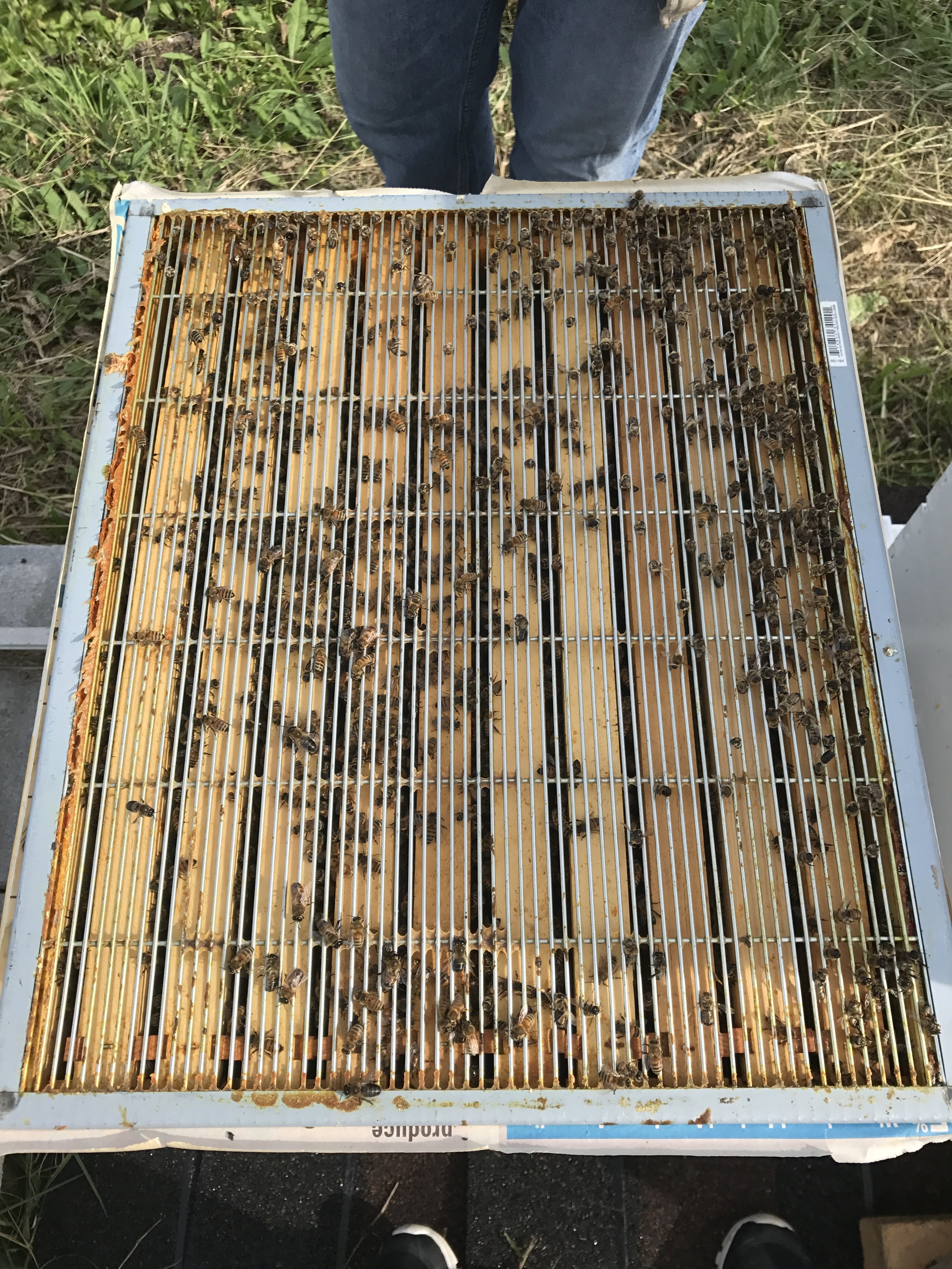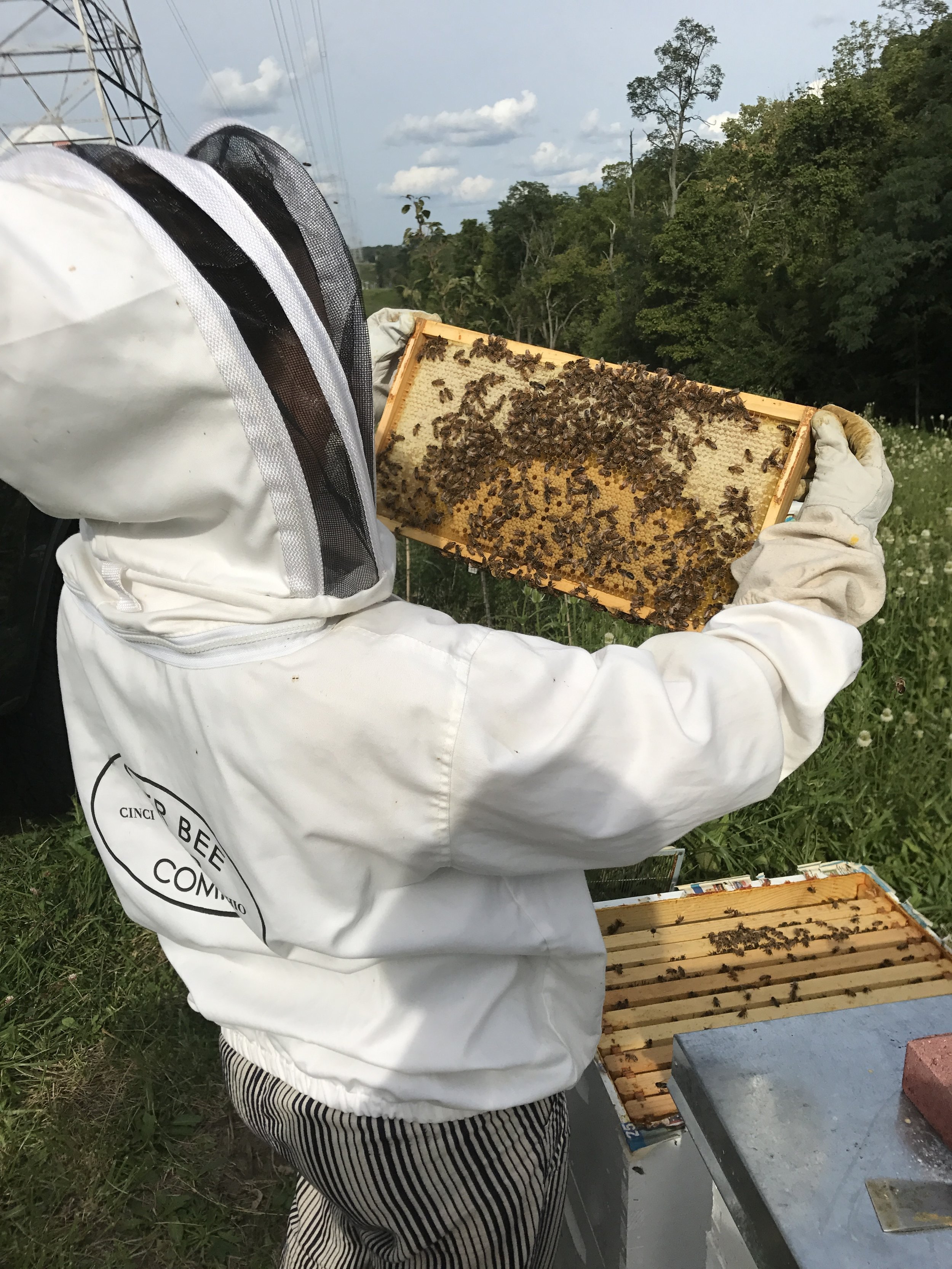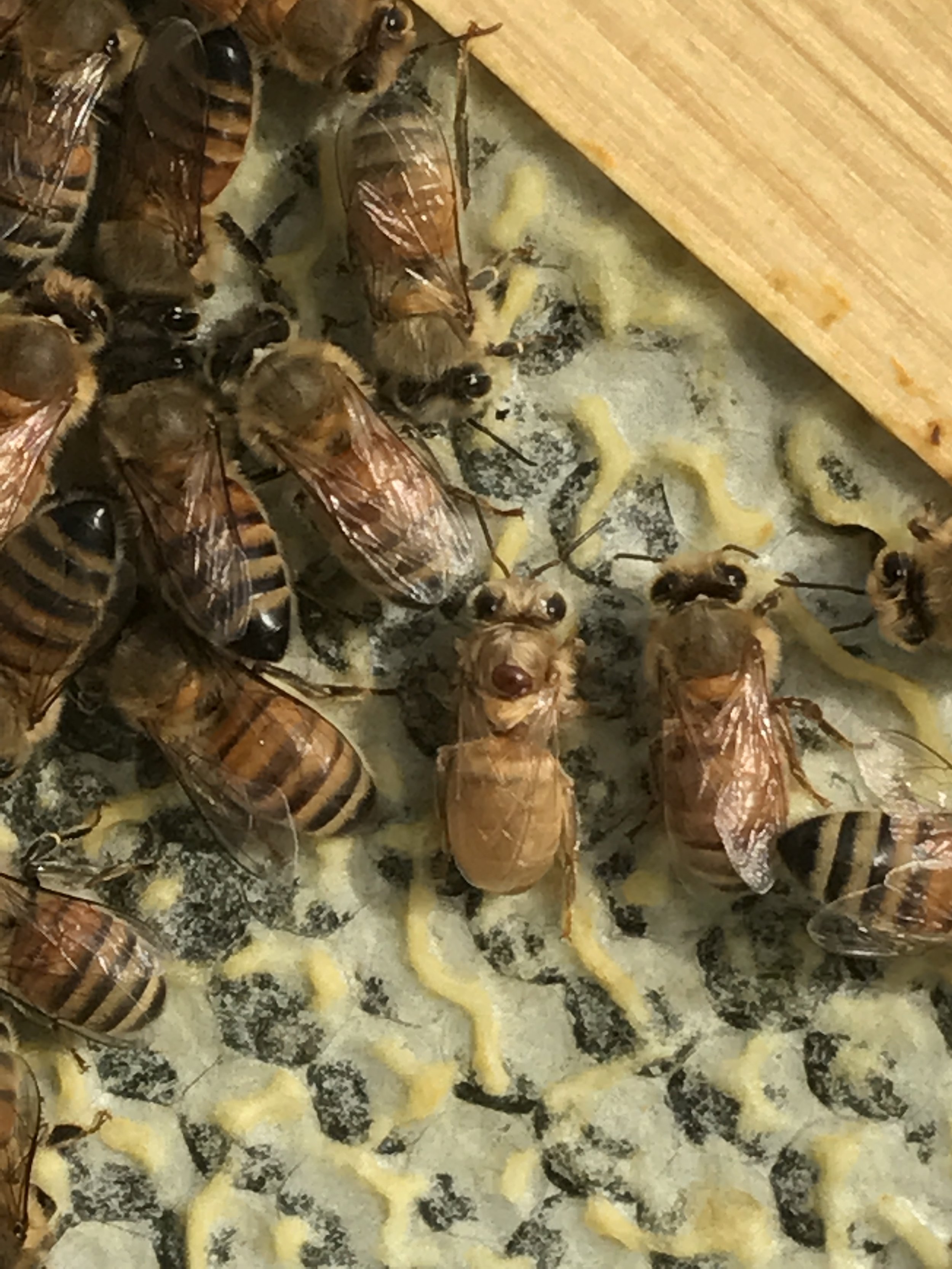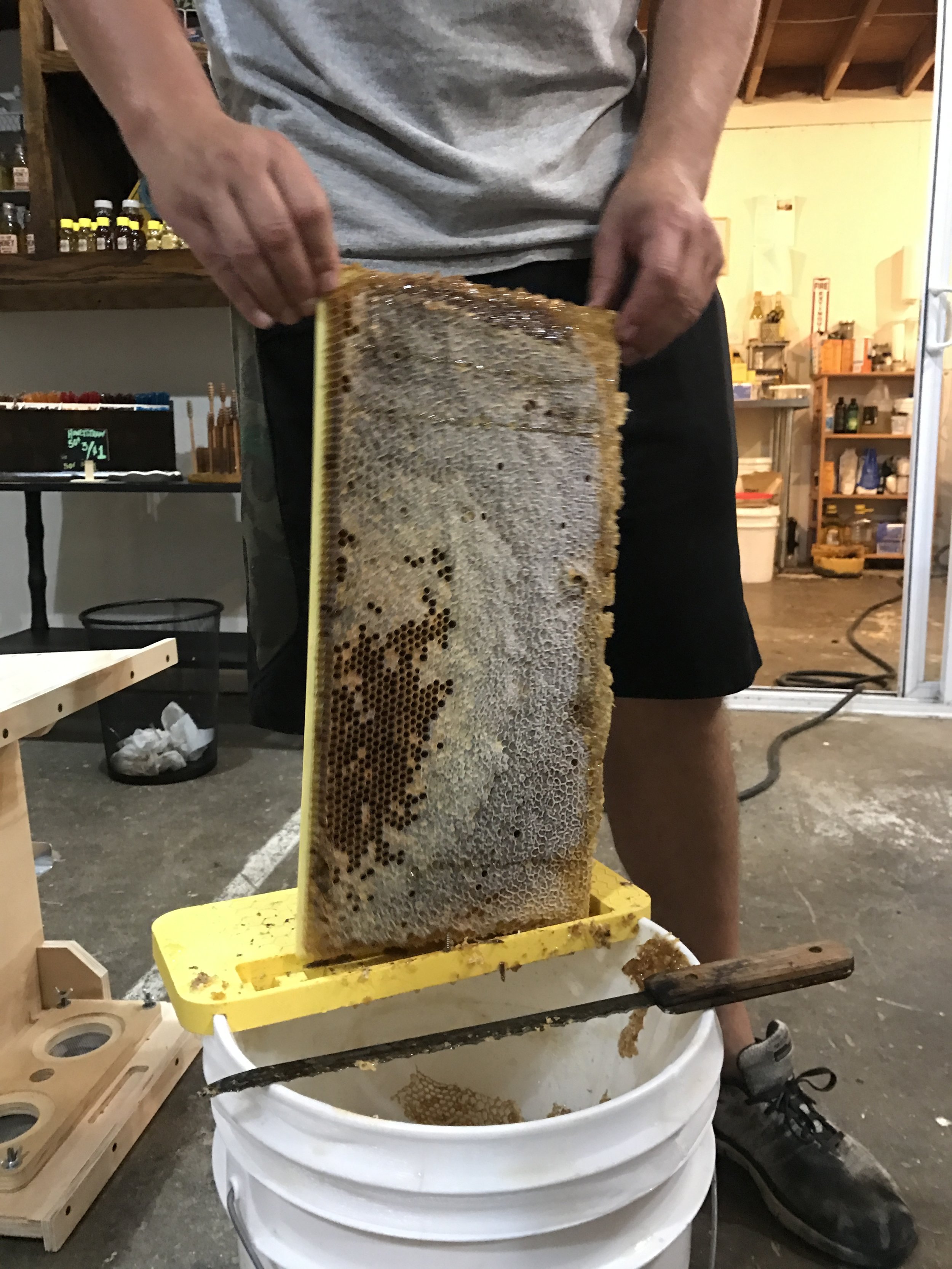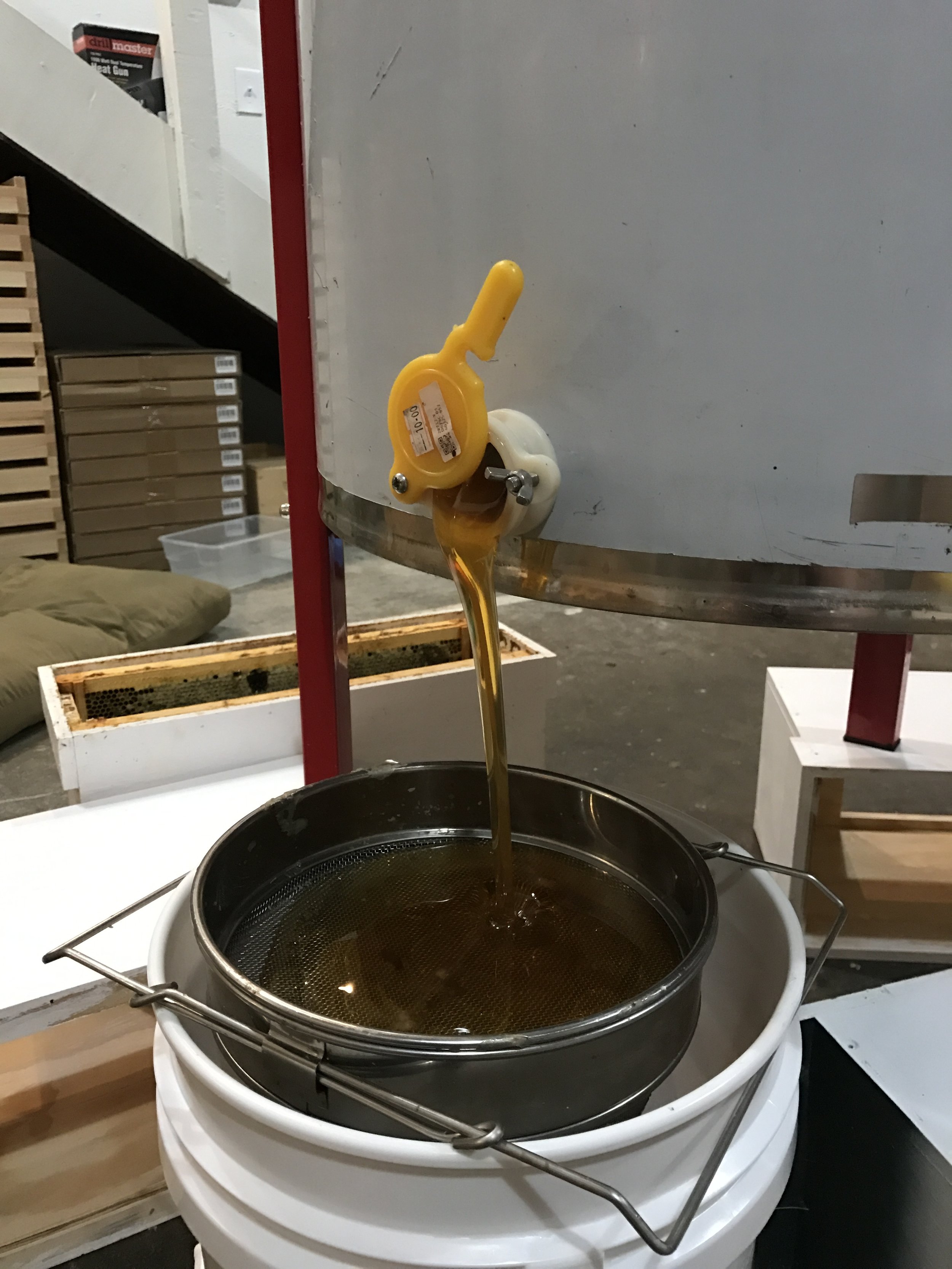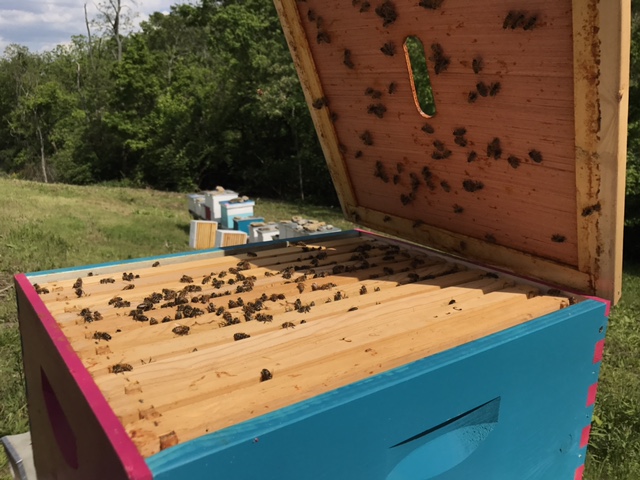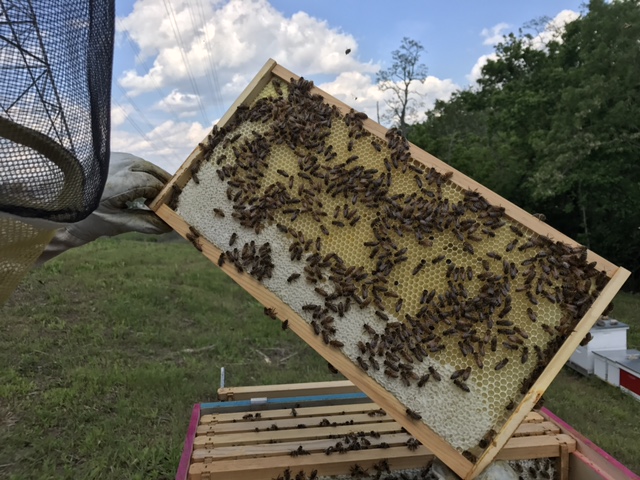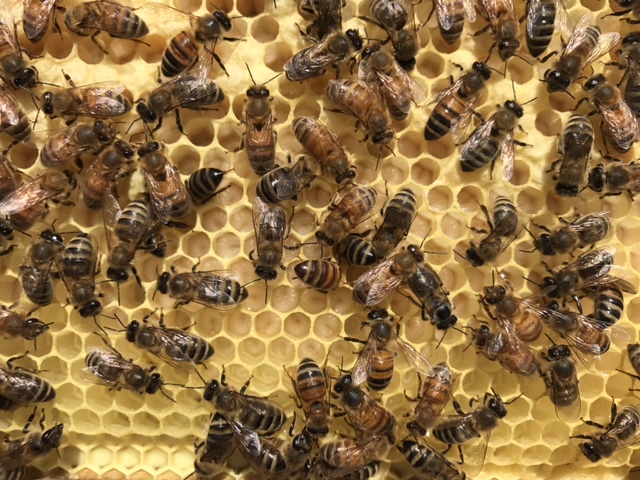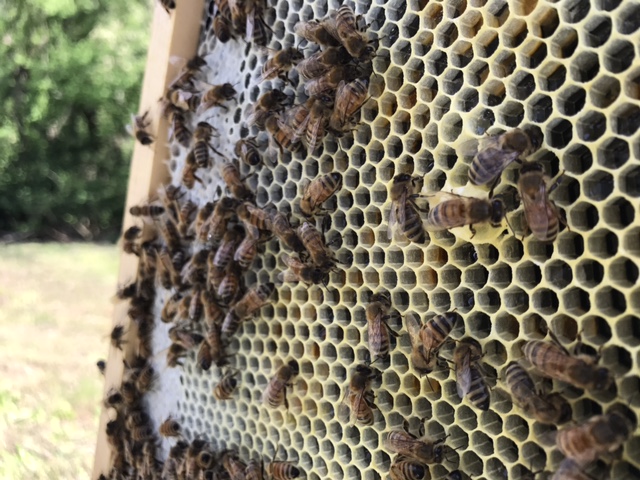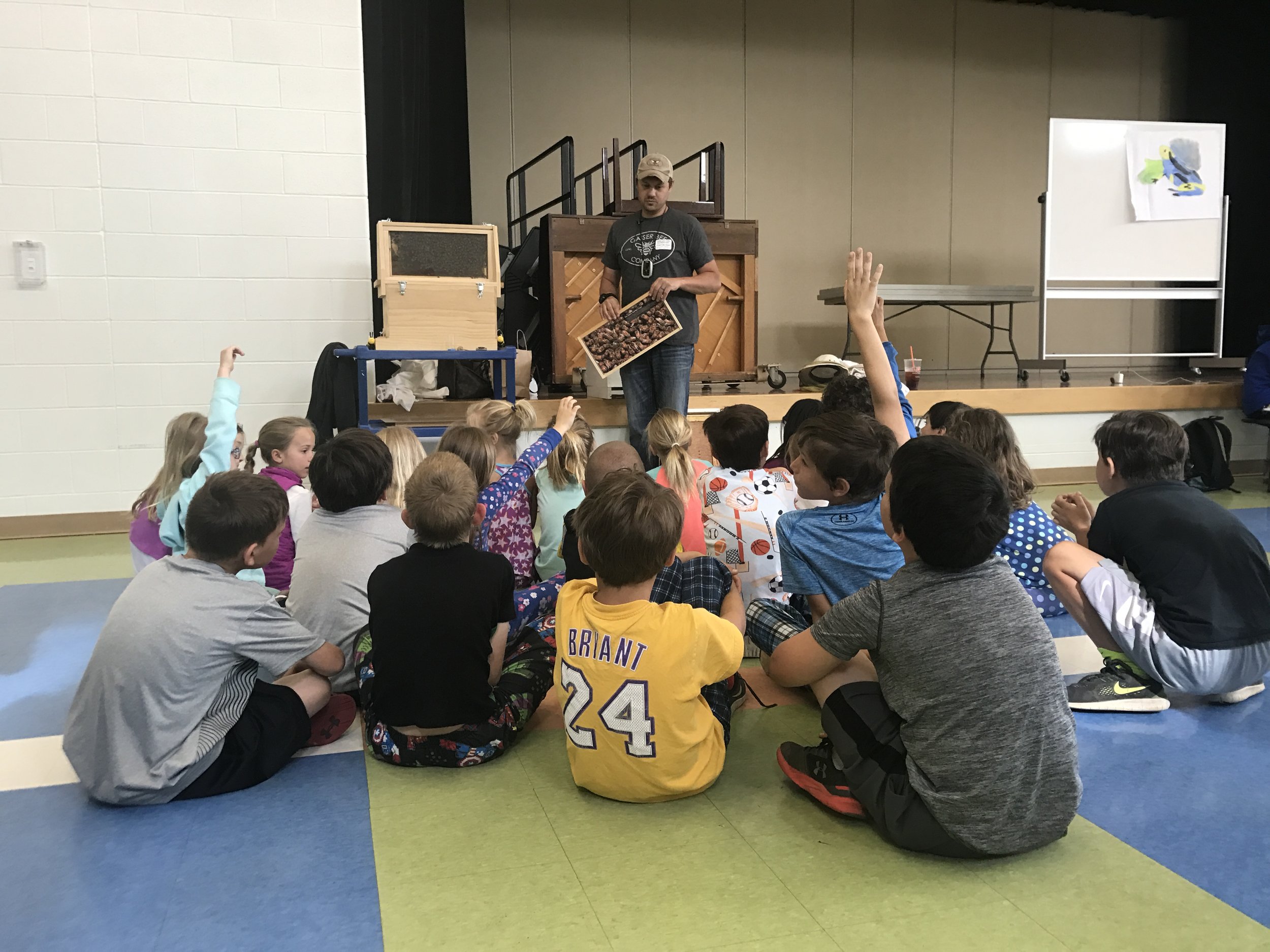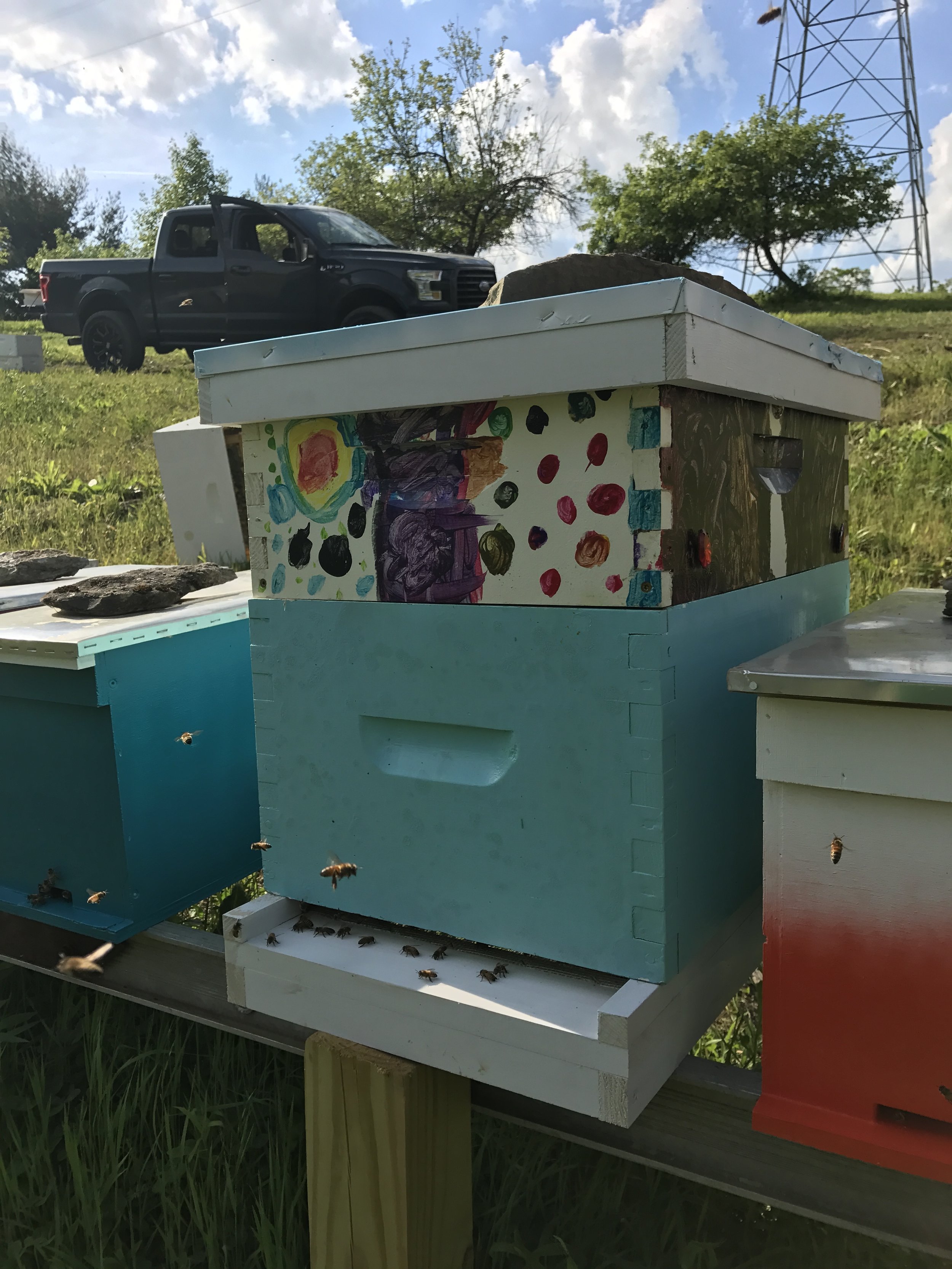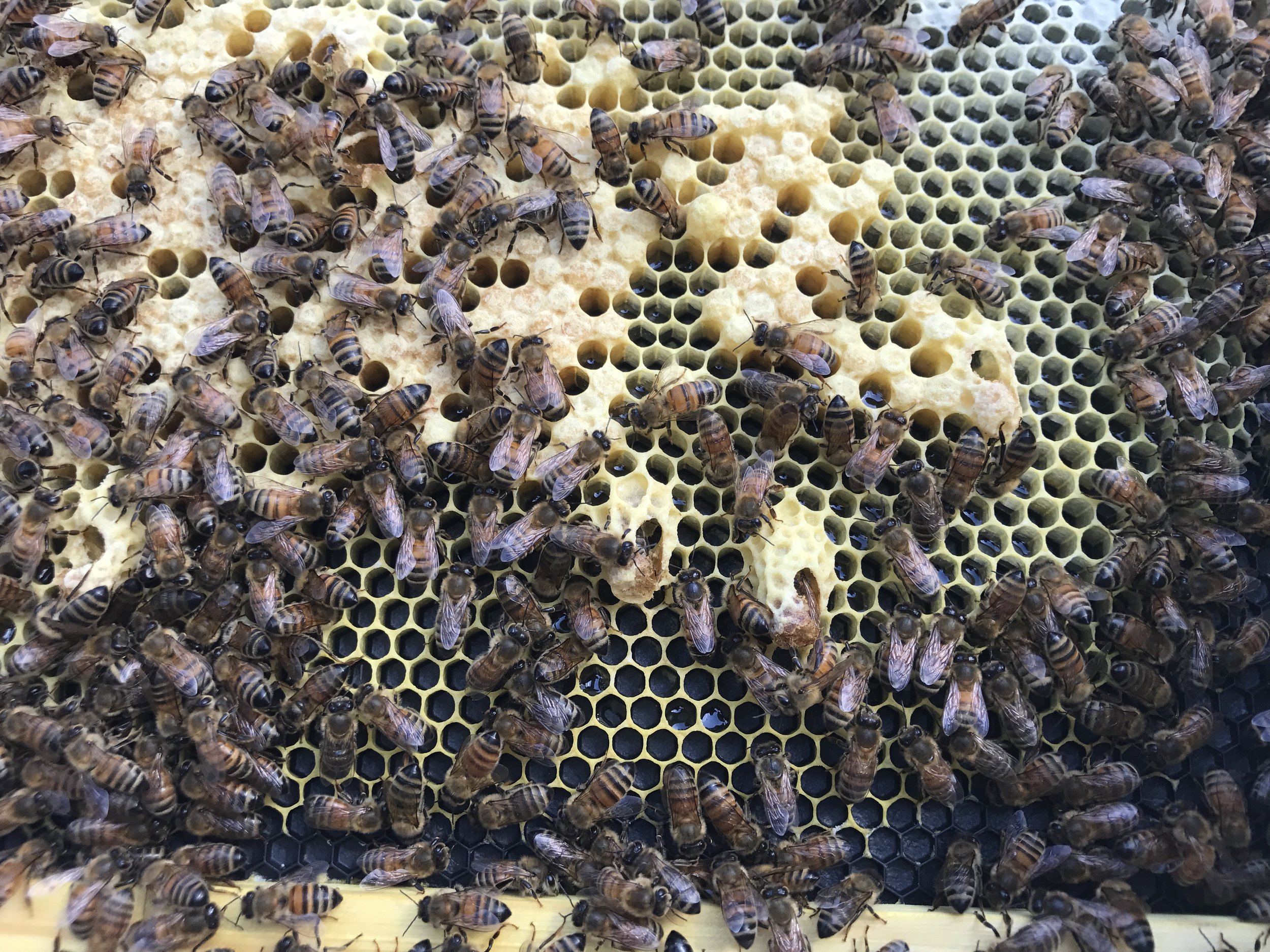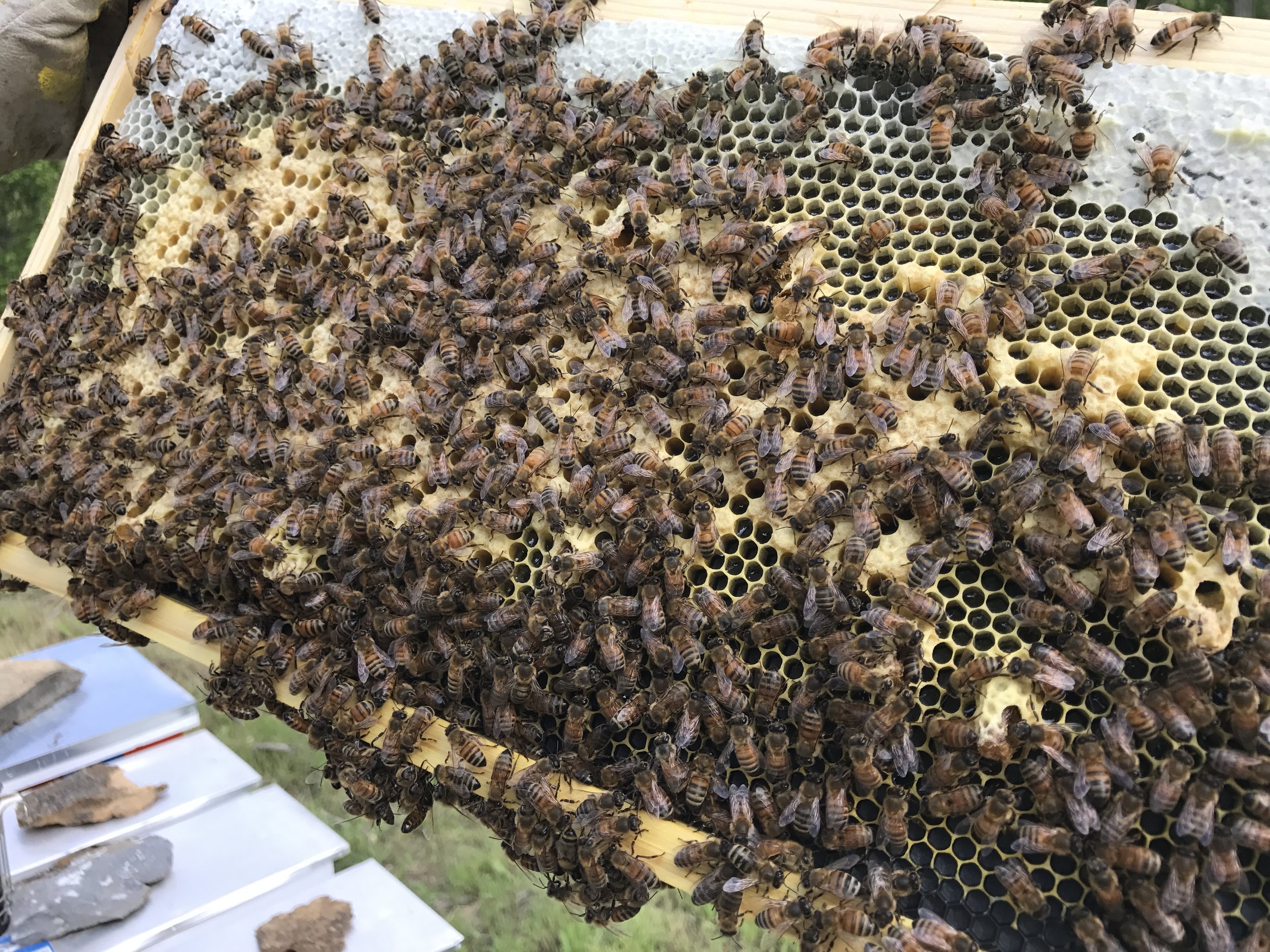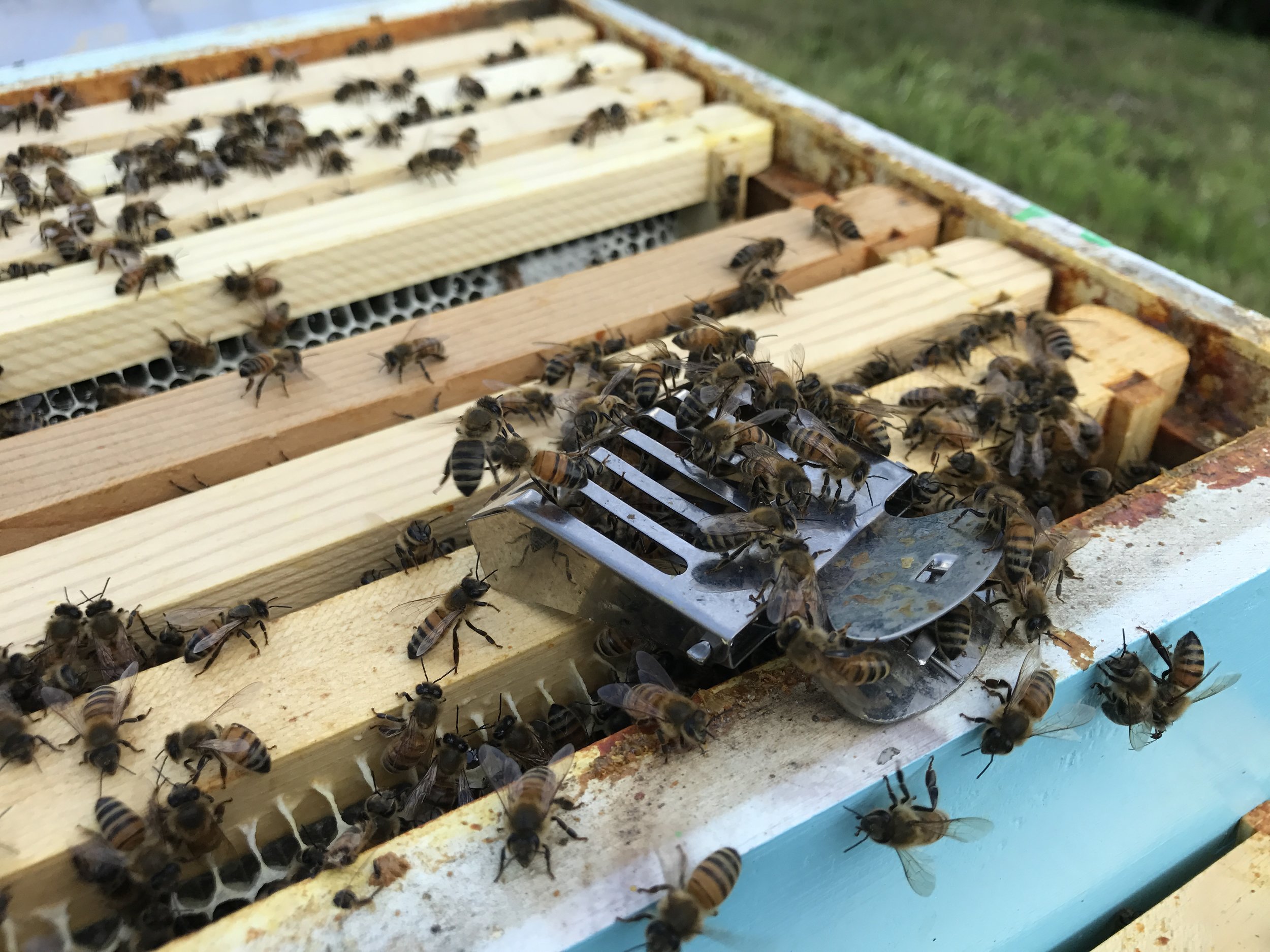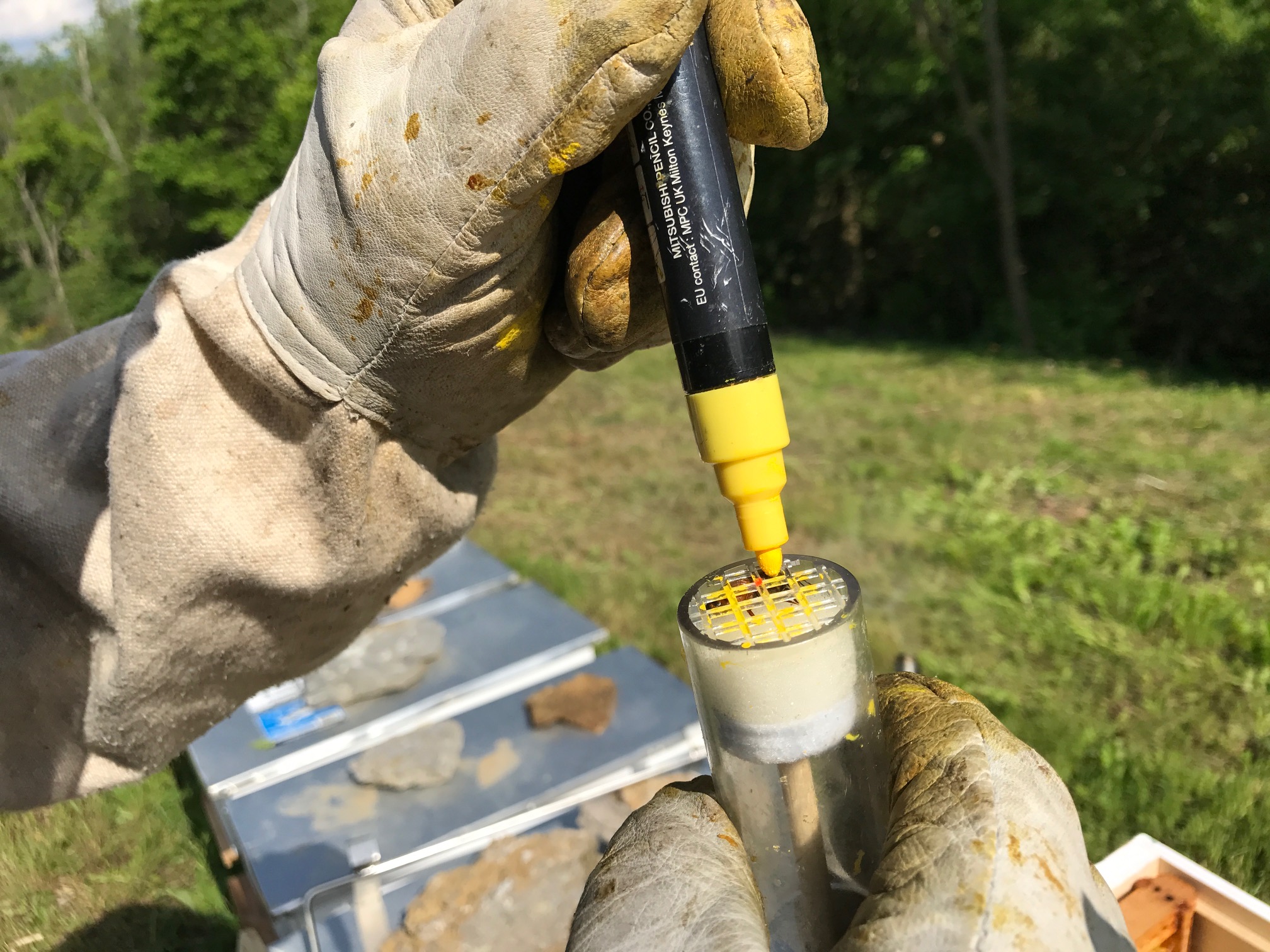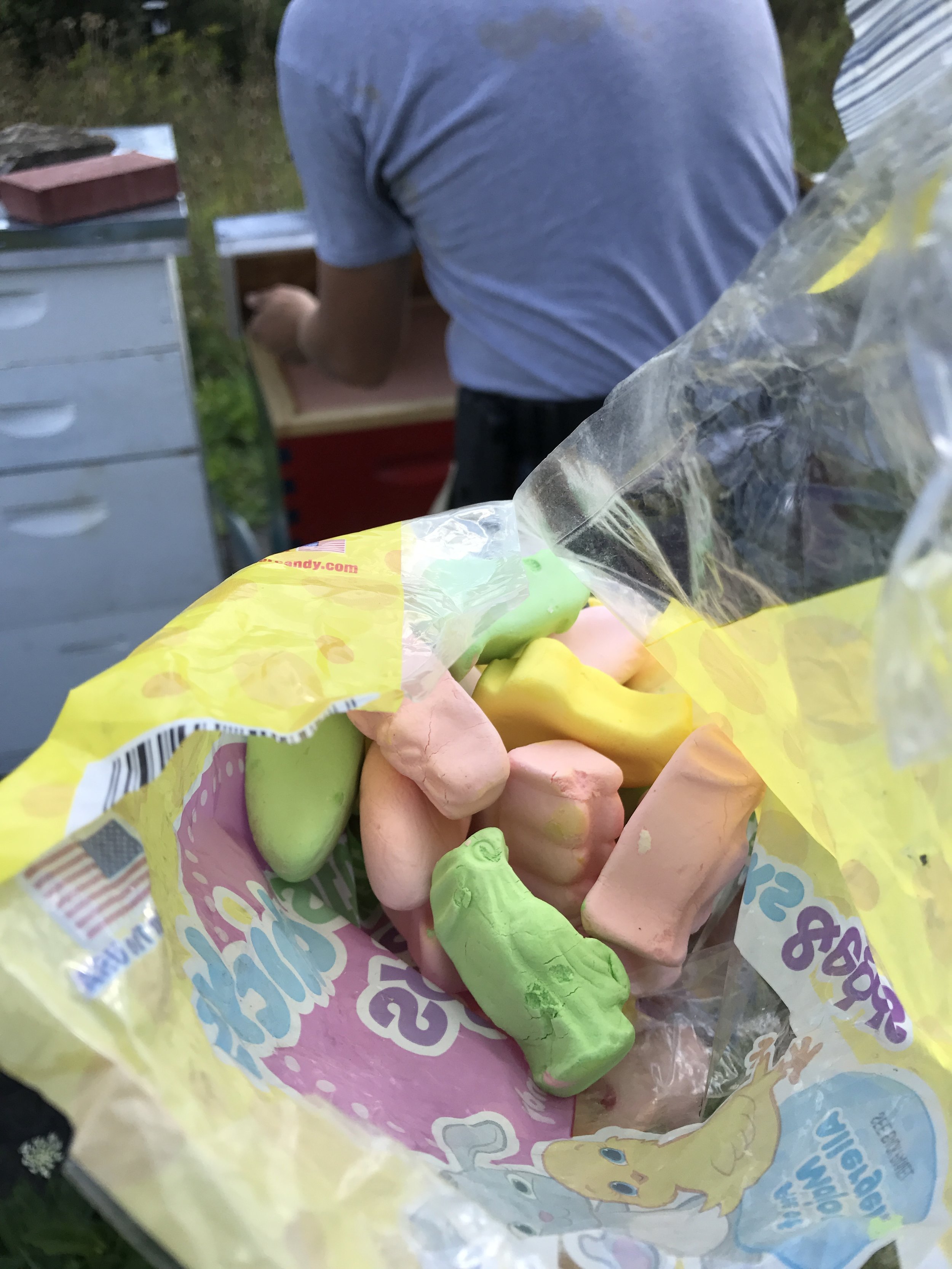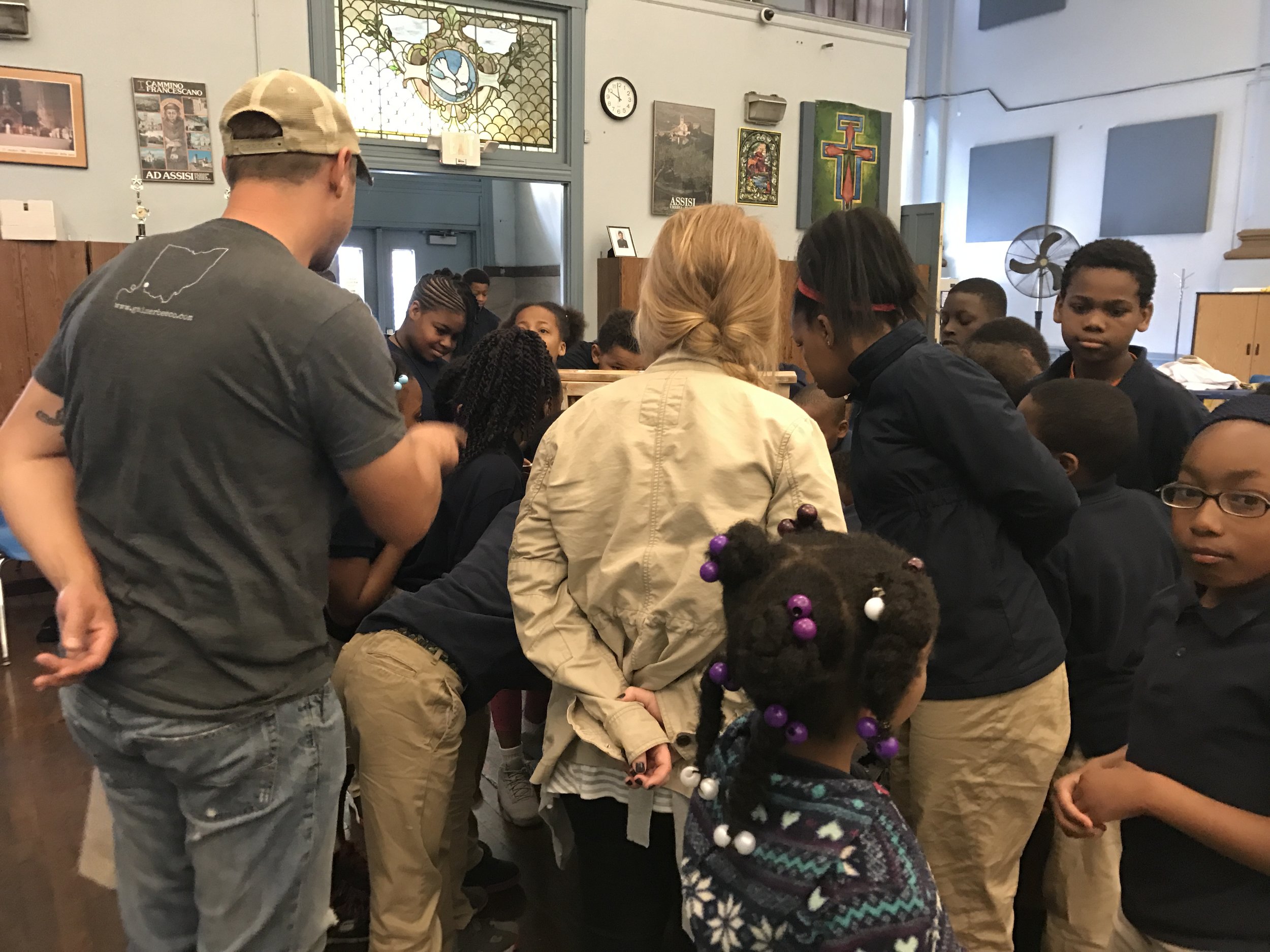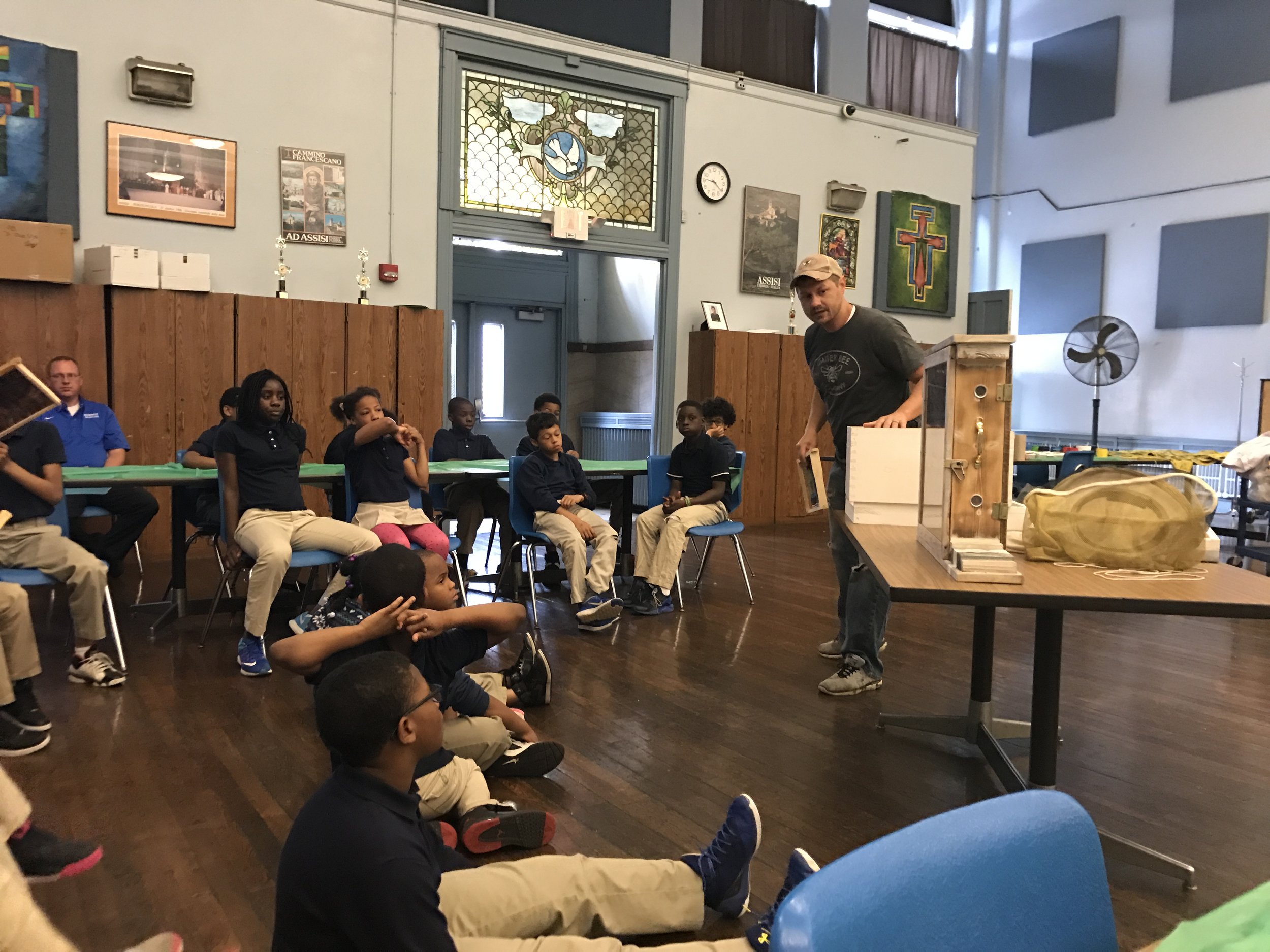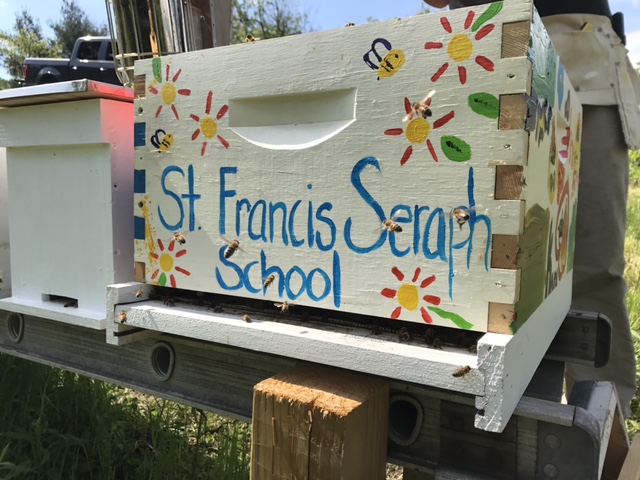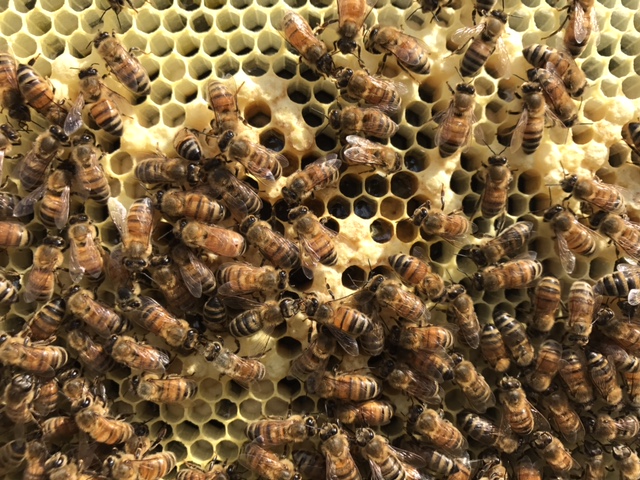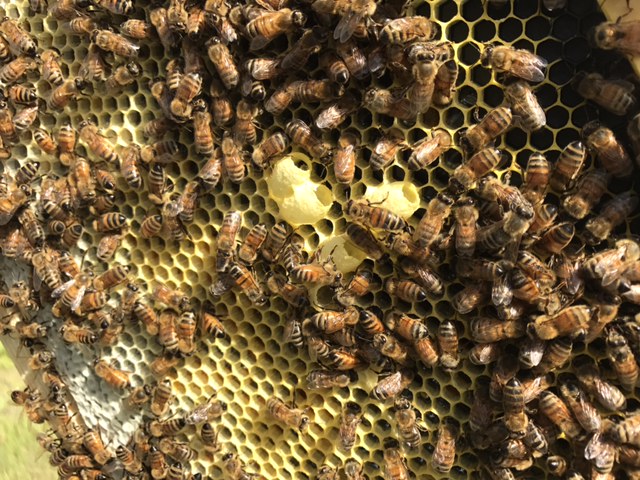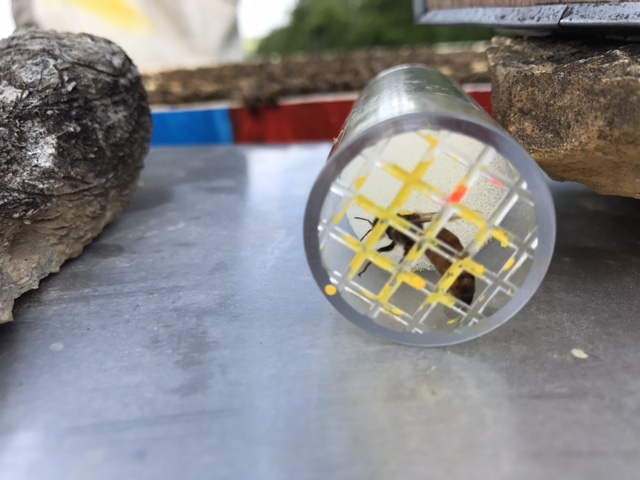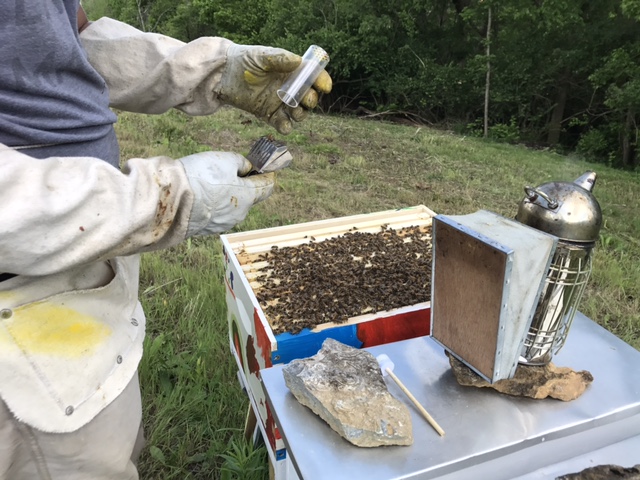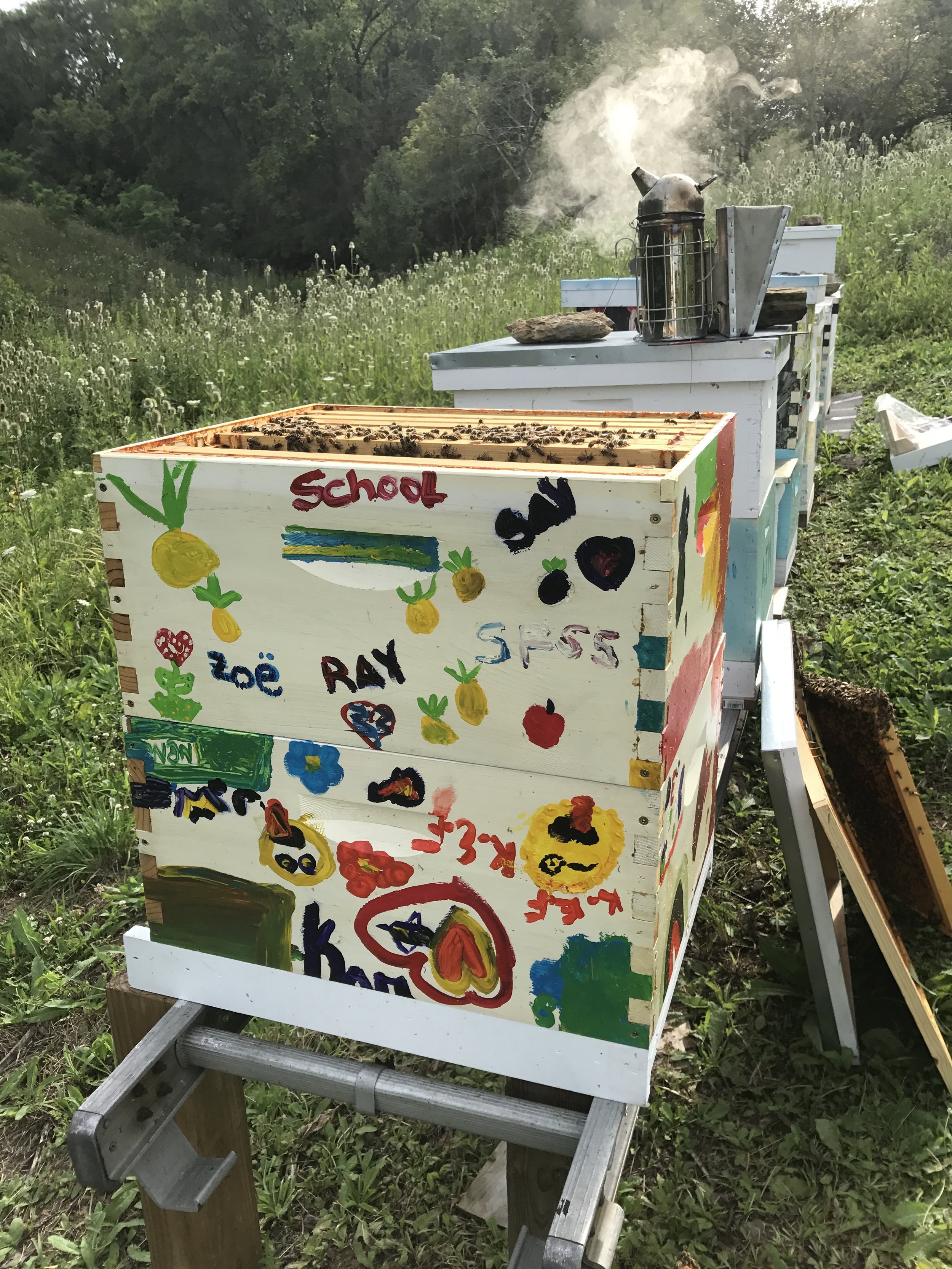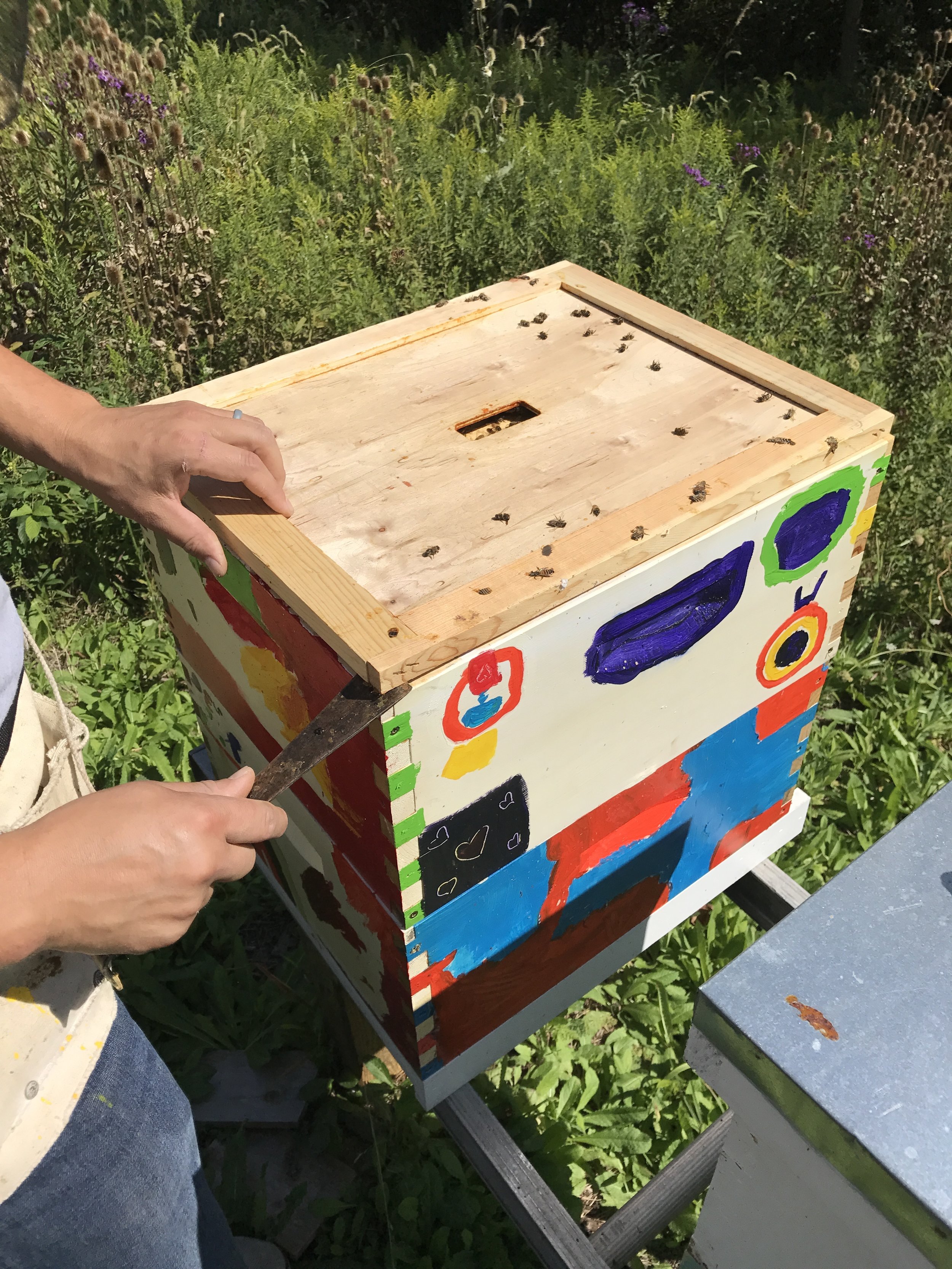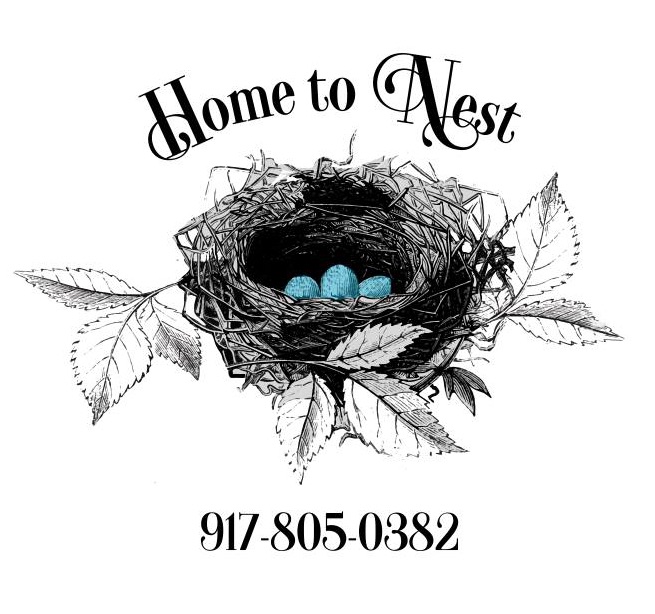Thank you to the Kling Family for hosting a hive in the Gaiser Bee Co. apiary for the 2017 season. It was pleasure having you guys at the class and we hope to have you out to the farm again soon.
Here Cory is taking off the side of this pillar to expose the honeybees.
The Kling Family hive story begins May 2nd. What you see here is our neighbors pillar, FILLED with honeybees! Late one afternoon, we got a call from a concerned neighbor informing us that he was noticing some strange activity coming and going from his garage. As he explained this to me I knew right away what was going on, so Cory and I headed down the street to check it out and see what we could do.
When we got there, right away we identified them as honeybees and noticed that they had moved into this pillar. So with the owners permission we gently removed a side of the pillar to expose the bees. To our surprise, there were more bees than we could have anticipated!
The amount was incredible! This was one of the biggest swarms that we caught this year.
Their numbers were so high that when Cory removed the panel they began falling onto the deck. So right away we started getting to work; collecting these bees and safely getting them into our swarm box.
Once they were all safely in the box, we closed it off and took the hive back to our apiary. The next day we opened up the entrance to enable them to fly around and get acclimated.
Here, Cory is transferring the swarm to a larger box since their numbers were so high.
INSPECTION DAY MAY 14, 2017
It wasn't until May 14th, when we did our first inspection on the hive to see how they were doing. When we opened the hive we instantly had a feeling that the queen may not have made it because they were humming very loud (which can indicated irritability in the hive as a result from a missing queen). Once we got into it more we did notice that the queen was missing.
So what did we do? We called a friend that had some queens and placed her in with the colony. She stays in a small cage for a few days in order for the other bees to recognize her pheromone and make sure they accept her.
Now we wait.
We have provided the colony with more room for growth and gave them a new queen that they should release in just a few days. On our next inspection we will want to make sure they have accepted her and that she has begun laying eggs.
inspection day August 5, 2017
Kling Family Hive
We went out to the apiary for another inspection on August 5th and decided to treat all of the hives for precautionary reasons.
We're getting to that tricky time of summer when it's much too common to find the hives being infiltrated by mites and other unwanted species. We saw these bees had fallen victim so we ended up having to treat them for Parasitic Mite Syndrome(PMS).
Reports from the Ohio Department of Agriculture are indicating that the varroa mite population this season appears to be excessively high. Varroa mites are minuscule in size but they latch on like ticks and drain the life from the victim. We wanted to see if this was true with our hives so we did a thorough inspection on 10 of the hives in our apiary. Of those 10 hives, 6 had obvious signs of heavy mite infestation. Including but not limited to:
- bees with deformed wing virus
- poor honey storage
- spotty brood pattern
- larva that appears melted in their cells.
But, not to worry! Just because your hive has mites, doesn't mean it's the end of the world– or their world, really. We have started treatment and will be treating every hive in the apiary every five days for the next twenty days to ensure that the brood, currently in the larvae stage, is fully treated and protected from the varroa mite infestation once they hatch and start to grow/work. We believe these ladies will pick themselves back up and become a healthy, thriving colony once again in no time!
TREATMENTS
Because of the high number of Varroa mites throughout the entire state of Ohio, we spent the month of August treating all hives. We did an organic treatment of oxalic acid in 3 treatments, 5-7 days apart in order to treat all capped brood as they hatched.
fall extraction season: late summer - mid fall
Inspection Day September 9, 2017
After treating all of the hives and monitoring the bees behavior throughout the month, we opened their homes back up on September 9th to see how everyone was doing. We specifically went in to check on the status of the Varroa Mite treatment and to see where their food supply is at.
The treatment looks like it worked tremendously and everyone seems to be happy and healthy! Therefore, we proceeded with checking the food supply and decided to add in some Easter marshmallow candies on the inner cover until we start the feeding for fall.
Feeding during fall is necessary after extraction season so that the bees can continue building up their food supply for the winter months, before the cold gets here and they're forced to bundle up indoors just like the rest of us!
october 3, 2017 inspection day + final extraction!
On October third, we went to the apiary to gather the frames for our final extraction of the year– the beloved fall honey!
Fall honey is dark in color, plus rich and bold in flavor. It is a bit thicker and more of a dark amber color compared to spring honey. While darker honey is more flavorful and intense than light, it also contains more nutrients; including vitamins, minerals, and antioxidants.
We didn't pull many frames from the newer colonies this year so the honey you will be receiving will be coming from some of the stronger, more established hives– so yours can continue to thrive.
The final step, in the first week of November, will be to go through and consolidate some of the colonies and insulate them.
CLICK HERE to see a video of how we will be preparing the hives for winter
We will be sure to keep you updated on our next visit out to the apiary. Be sure to follow this blog for updates and feel free to post any comments, questions or concerns.
Stay tuned!











